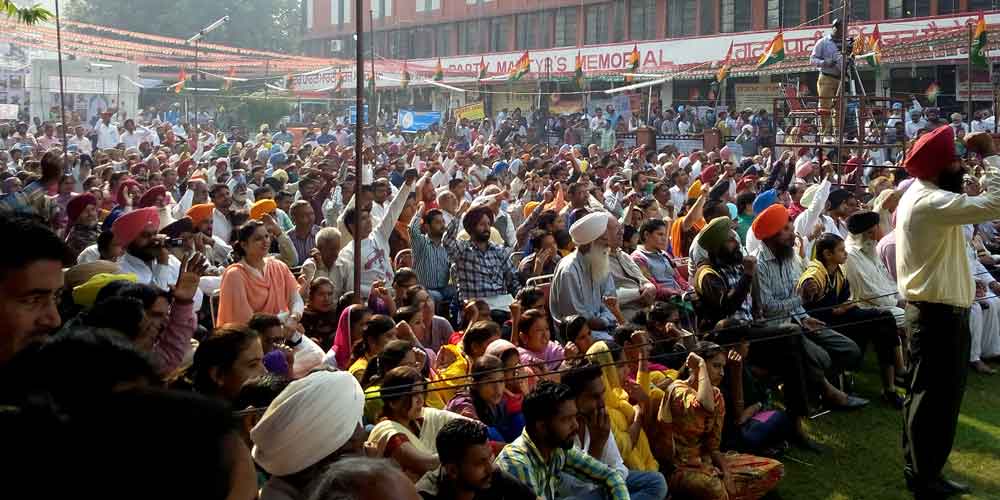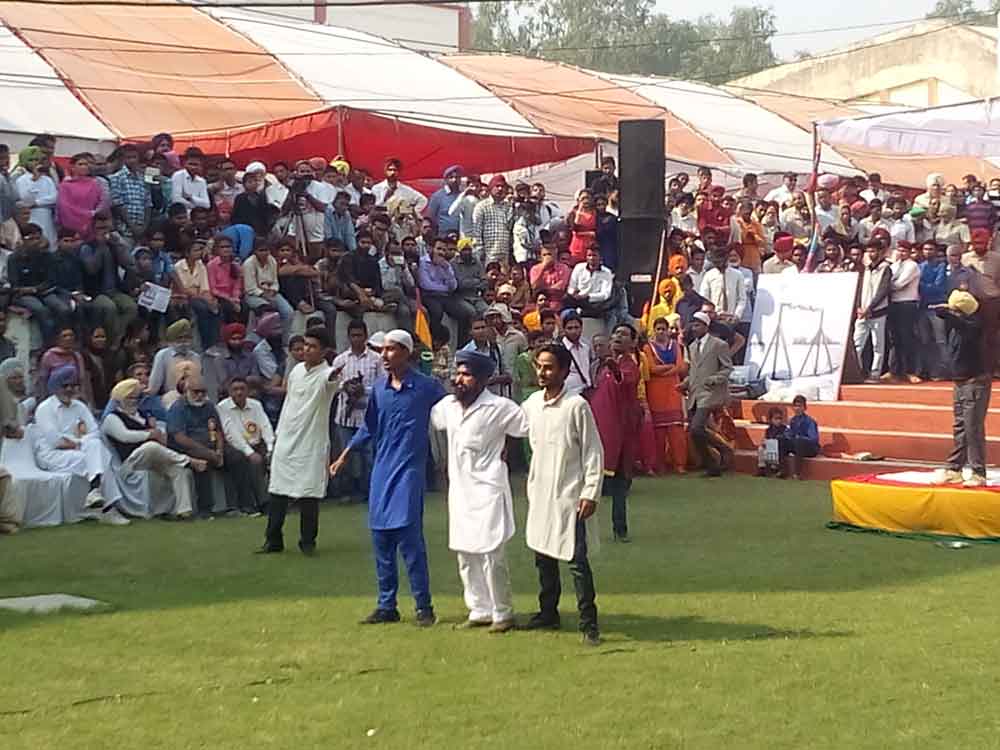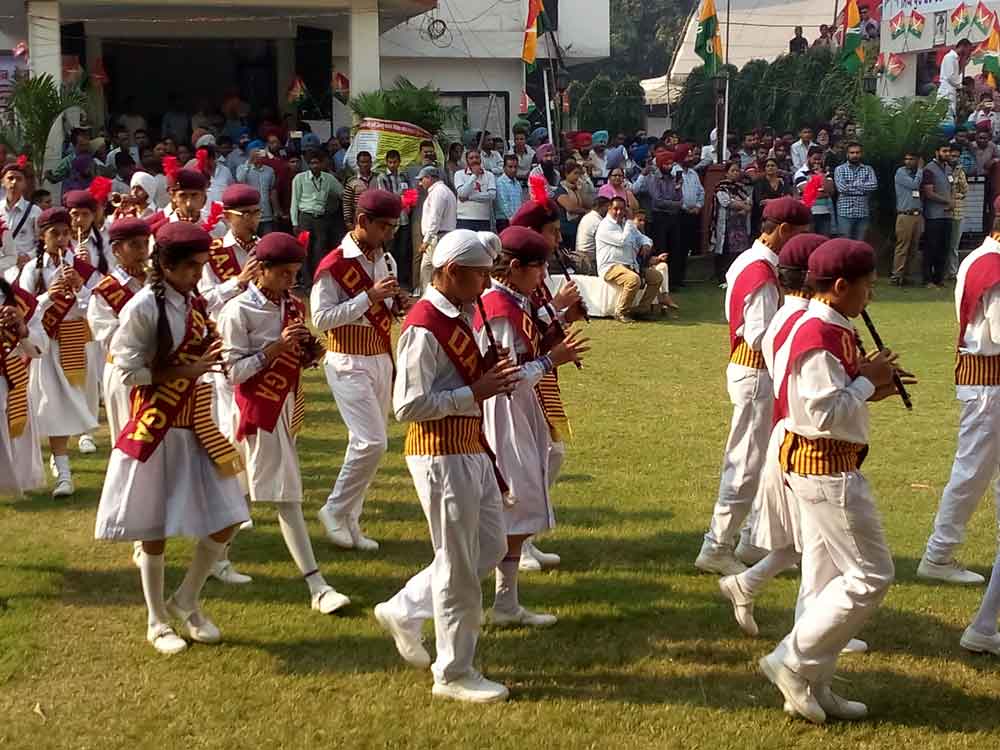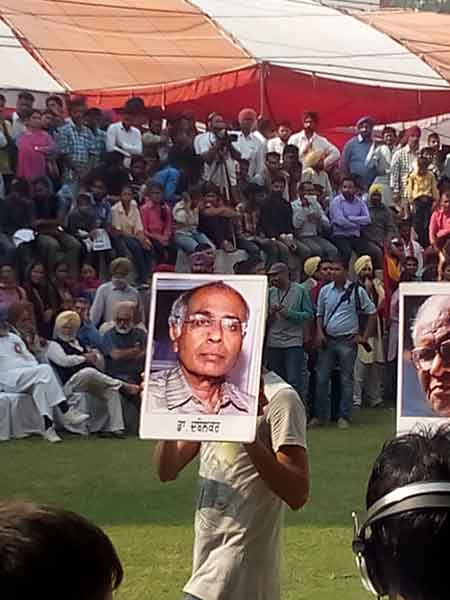Gadri Mela: The Revolutionary Fete Of Gadarites
By Nikita Azad
10 November, 2015
Countercurrents.org

October 30 to November 1 are days of communist festival in Punjab. Punjab, which is homeland to some of the greatest revolutionary martyrs such as Bhagat Singh, Kartar Singh Sarabha, Udham Singh, has kept the tradition of celebrating successes of people's struggles alive. Every year Punjab commemorates birthdays of various martyrs and pays homage at their death anniversaries. But, one of the most significant such celebration is "Mela Gadri Babean da", which is observed every year from 30th October to 1st November in Desh Bhagat Yadgar Hall, Jalandhar. The fete is organised to pay homage to the great Ghadar movement, launched by Indians living abroad against British regime in India.
Ghadar party was formed in 1913 in the U.S.A, with Baba Sohan Singh Bhakna as its president. The party published a newspaper which was the backbone of the party known as Ghadar: Angrez Raj da Dushman (The enemy of British Rule). It was essentially a secular, patriotic party with Tarak Nath Das, Maulvi Barkatullah, and Vishnu Ganesh Pingle as its members. The party, as the name suggests was aimed at advancing a rebellion in India against foreign rule, for which it organised meetings in villages, and convinced people to revolt against prevailing injustice. Although it failed in attaining freedom for its beloved motherland, it served as a stepping stone in independence struggle of India.
This year, 24th fete was celebrated in Jalandhar, which saw 100th death anniversary of Ghadri leaders like Kartar Singh Sarabha, and V.G. Pingle. As usual, the fete commenced on 30th with singing and declamation competition in the evening, and plays in the night. Many students from different schools and colleges participated in the competitions. On the next day that is 31st October, Quiz and painting competition were organised, and Kavi Darbar (Poetry Session) was held in the evening. Kavi Darbar was one of the most enthusiastic event in which different revolutionary poets of Punjab like Darshan Khatkar, Harwinder Bhandal, and Surjit Gag participated. The walls of the hall echoed with red revolutionary verses sung by poets of different ages. The motive of the poetry session was, according to the host Harwinder Bhandal, to politicise youth, and students, raise their level of critical consciousness, and alert them off the diversions which mainstream tries to bring in the name of religion. When I asked about the content and form of poetry that is being used these days, he commented, "There is a new trend among youth.. They update their statuses on facebook, write poems, and feel contented with the number of likes and shares.. Such poetry is detached from the actual history of poetry.. They do not know the level of poetry.. they need to begin from the point where their previous generation has left poetry.." He emphasised the role of professors, teachers, and counsellors in uplifting the level of consciousness in youth. He said that the market discourse is isolating youth from its primary concerns. Harwinder Bhandal is an eminent poet of Punjabi, who has written several poetic volumes, including Khuskushi Ik Chup Di (Suicide of a silence).

Hindu Muslim Sikh Unity Song
After poetry session, three documentaries were shown by a group People's Voice, namely, 'Jinhe naaz hai Hind par wo kahan hai', In dark dream, and One beautiful dream, directed by eminent Indian scientist and documentary film maker, Gauhar Raza. The theme of the documentaries was to expose the fascist character of Indian state, by juxtaposing it with the reign of Hitler in Germany.
The next day, 1st November began with custom of hoisting the flag at 10:00 a.m. in the morning, which was inaugurated by Mr. Gurmeet, trustee of Desh Bhagat Yadgar Hall. It was followed by salutation by band performed by students of DAV School, Dirba. This team of school students of adolescent age enthralled the audience with their errorless performance, and hearty obeisance to martyrs. After it, Song of Flag, a choreography, highlighting the entire history of Ghadar Movement, and signifying its importance in present, was performed by different teams, under the leadership of Harwinder Diwana, Lok Kala Chetna Manch, Barnala. The choreography mesmerized the audience with its beautiful story and direction. The most heart throbbing scene of choreography came when in the end the entire team paid homage to Kalburgi, Panesar, and Dabolkar, by holding their placards. This event involved over 150 participants who regularly practiced in the hall for endless hours.
The second event of day was honouring the families of those who were martyred a century before this year. The family of Vishnu Ganesh Pingle, came all the way from Pune, Maharashtra to receive the honour. The eyes of families and audience were filled with tears while the event. This day, Utsa Patnaik, professor of Economics, JNU came to deliver lecture on Imperialism and Agrarian quesion. Also, Shamshul Islam was invited to speak on Rise of Fascism in the nation. The entire night saw various plays, namely, 'Bagane Bohr di chaan', 'Kachi Garhi', 'Mera Bharat', 'Dastan-e-Gadar', 'Spartacus', and 'Tain ki dard na ayeya', under the direction Prof. Ajmer Aulakh, Keval Dhaliwal, Dr. Sahib Singh, Gurinder Makna, Vicky Maheshri, and Balwinder Bullet respectively. Many singing groups including Jatha Rasoolpur, and Dastak Manch performed during the night.
On all the three days, the most eye catching thing of fete were the book stalls. People came from all over India, to set their stalls, and purchase books. The book exhibition is the biggest one of Punjab, which is attended by different colleges, schools, villages, and cities also. I happened to talk with one publisher, namely, New International Publications, who came from West Bengal to provide their literature to the people of Punjab. Gautam Paul, one of the publishers, said, "This fete is very crucial since it unites broad left against ruling class.. It liquidates the differences within the left for some time, and shifts the camera towards state.. Also, it is very difficult to find such a tradition of openly criticising state for its fascist character.. The counter culture it boosts is extraordinary.."

Prof. Jagmohan, nephew of Shaheed Bhagat Singh, also came to the fete and recognized the year as a historically special year where on one hand, the state is trying to rewrite history, and on the other, people are holding the flag of their history. He gave a message to the youth that, "Bhagat Singh once wrote, Realism is my only cult.. and I was really surprised to see the word 'cult' in an atheist's writings.. But I understood later what he meant.. The youth of today needs to acknowledge the reality.. to face the objective situations.. and unitedly think about it.."
A question kept teasing me that how come left forces purchase such a big hall for anti-state, pro-people propaganda. I, then, met the convenor of the programme, Amolak Singh, who gave me detailed information about the history of the hall, and how it achieved such fame. He said that, "In 1959, Amar Singh Sandhma, Gurmukh Lalton, Sohan Singh Bhakna, and others sold their lands to purchase this piece of land.. The immediate purpose of the hall was to help the families of deceased.. The first name of the hall was Parivar Sahiyta Committee (Committee for the help of Families).. Later the name changed to Desh Bhagat Yadgar Hall.. in 1992, when we organized the fete for the first time, it did not even last for one night.. But the benchmark was set in 1995, when we organized a 15-day workshop where plays Gadri Goonja and Spartacus were prepared under the direction of Keval Dhaliwal.. Then, in 2013, when Gadar completed its century, we organised a programme of five days.. The most important aspect of our programme is that we have no chief guest.. People are our chief guests.."
 The ambience of the fete was such that the hall was decorated with different lights, slogans, charts, and speakers that echoed in the night. Also, there was proper arrangement of breakfast, lunch, and dinner for people. The gender gap seized to exist in the fete since almost equal number women came to see the fete and stayed overnight. The atmosphere itself confronted patriarchal notions, where in play teams, singing groups, women took the head on authority. Smiling faces of workers, peasants, and innocent little children doubled the glory of fete.
The ambience of the fete was such that the hall was decorated with different lights, slogans, charts, and speakers that echoed in the night. Also, there was proper arrangement of breakfast, lunch, and dinner for people. The gender gap seized to exist in the fete since almost equal number women came to see the fete and stayed overnight. The atmosphere itself confronted patriarchal notions, where in play teams, singing groups, women took the head on authority. Smiling faces of workers, peasants, and innocent little children doubled the glory of fete.
Gadri Mela is a fest that nourishes people's culture and breaks the cultural hegemony that state tries to impose by its ideological apparatuses including cinema and media. It brings forth a counter-culture which is not appropriated by the imperatives of corporates, and is free from the normative of present day culture. In times as these, when individuals and outfits that do not succumb to the predominant understanding of society, and its processes, are murdered, a fest like this has enormous importance. It addresses the questions of caste, class, gender away from the liberal humanist cultural representations, and shifts the angle towards cobwebs where the mechanisms of differential handling are invented. It provides platform to the voices which are being repudiated by so-called directives of modern cinema and theatre, by providing them space to proliferate their perspectives of comprehending reality.
In the end, it brings together contesting left ideologies together on one platform, and makes them engage in serious political discussions such as theoretical line of revolution. It also brings about contesting, yet similar literature in one lawn, which offers an opportunity of studying various differences in left, especially to youth. It uncovers the stereotypic version of revolution which begins and ends at Bhagat Singh, and provides deep insight into international scenario, the challenges at present, the debates of past, and the predictions of future.
To the state, Gadri Mela is an open challenge posed by masses against imperialism, its policies and culture, but for left, it is a platform to collaborate, thrash out differences, and clear the path of revolution.
Nikita Azad is a student activist, gender rights' activist from Patiala, Punjab.

